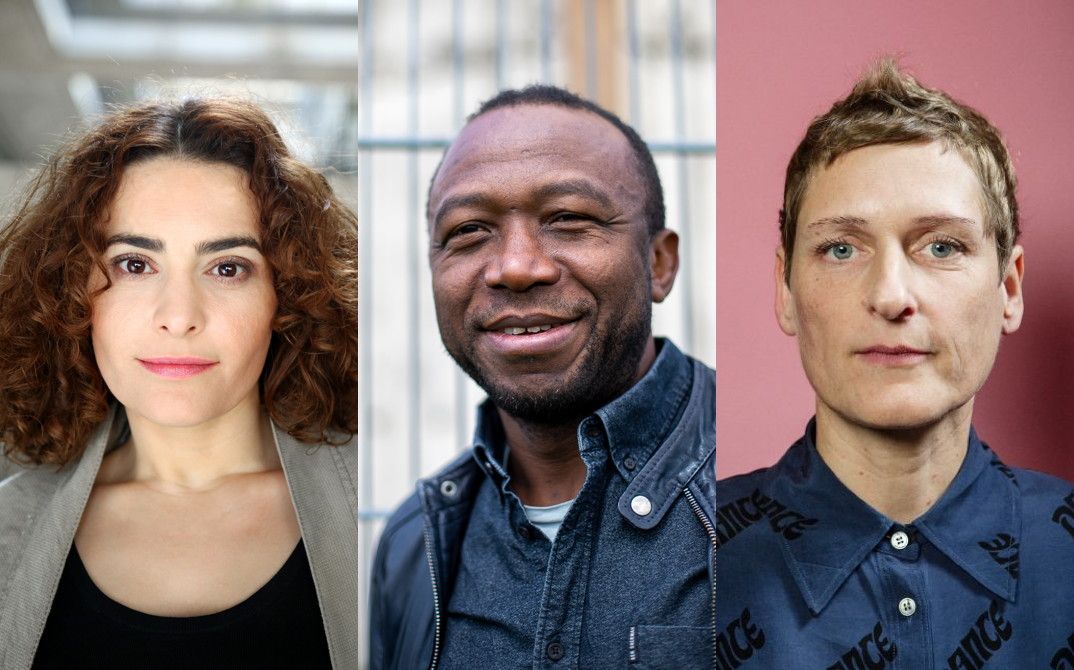Cristina Nord: The term Fiktionsbescheinigung actually comes from a bureaucratic context, from immigration law. How did it end up becoming the title of a film programme?
Biene Pilavci: A Fiktionsbescheinigung, which literally translates as “certificate of fictionality”, is what someone not from the EU receives in order that they can remain in Germany. The person in question makes a secondary application to stay in the country and is then given a Fiktionsbescheinigung while their application is processed. It’s akin to tacit approval they can stay for the time being, it’s a decision in their favour, as it were. What’s very telling and to my mind so typically German about all this is the need to invent a name for this particular phase.
Strictly speaking, simply making the application already permits you to stay in Germany while it’s being processed. The second interesting aspect of the term is the obvious link between fiction and film. The connection with German legal jargon isn’t immediately apparent. What we’re interested in here is the fictitious German film canon, the fictitious history of German film, neither of which actually exist in the way they are usually thought of. We want to shake up that whole rigmarole and question where the power of definition lies.
Enoka Ayemba: The second part of the word is, of course, “Bescheinigung”, that is, certificate, a certificate someone receives so that they can stay. And that’s something familiar from art and culture too. An academy, curators, a group of exalted people get to decide who belongs to the canon, to film history, and who doesn’t, and this association was so striking that we found the term at once appropriate and almost like a punchline of sorts. But the term only works as a punchline for those not affected by it. For those dependent on a Fiktionsbescheinigung, it’s no laughing matter not to know whether they’ll be allowed to stay or not.
CN: Both this year’s and last year’s programmes include works by directors who studied in Germany and tried to work here afterwards, but weren’t able to get a foothold. I’m thinking here of Raoul Peck, Wanjiru Kinyanjui or Idrissou Mora-Kpai. All three of them left the country to pursue careers elsewhere, which could be described as a sort of reverse brain drain. I’d like to bring up the question of what the goal of Fiktionsbescheinigung is? To create an awareness of such gaps?
EA: We’re interested in the question of belonging. Which films and which filmmakers are recognised and form part of film culture as a matter of course and which aren’t? And why is that the case? For those of us who explore such themes, it was easy to name films off the top of our heads that should belong to the former category and yet actually do not. Our goal was to pick out such films, show them and then look at the reasons why they’ve been excluded.
CN: How did you go about making the selection?
BP: Self-determination is a key concept here. Which films are narrated in a self-determined way, which films are narrated from an internal perspective and don’t look at the everyday lives and experiences made by people of colour and Black people in Germany from the outside? My research revealed that filmmakers of colour have to be radical to be noticed. Either you concentrate on your own story of migration in radical fashion and draw on that or you develop other radical stories. Only those who attract attention are able to establish themselves.
EA: We took a look at the film schools. That’s where people in Germany typically start out if they want to become filmmakers. We looked at the films we came across which we didn’t know. Then we asked ourselves: were the filmmakers white, were they not white, what were their biographies? And why doesn’t anyone know these films? It’s often good to ask the filmmakers directly why this is the case.
